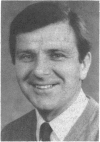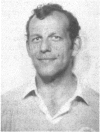Abstract
A laboratory-based sprint running test has been devised to examine the performance characteristics and metabolic responses of an individual to 30 seconds of maximal exercise. A non-motorised treadmill was used so that the individual was able to sprint at his own chosen speed and also to vary his speed as fatigue occurred. The treadmill was instrumented so that the chosen speeds as well as the equivalent distance travelled could be monitored by micro-computer throughout the test. The test-retest reliability of the procedure was investigated with 14 recreational runners who performed the test on different days. A good correlation (r = 0.93) was found between the values obtained for peak running speeds on the two occasions. In an attempt to establish whether or not this test could be used to identify the differences in the performance characteristics of highly trained individuals, the responses to the test of eleven sprint trained and eleven endurance trained athletes were examined. The sprint trained athletes covered a greater distance (162.2 +/- 5.95 m vis 153.51 +/- 12.32 m; p less than 0.01) and had higher blood lactate concentrations (16.52 +/- 1.23 mM vis 12.98 +/- 1.77 mM; p less than 0.01) than the endurance trained athletes. Therefore this laboratory sprint running test offers an additional way of investigating human responses to brief periods of high intensity exercise.
Full text
PDF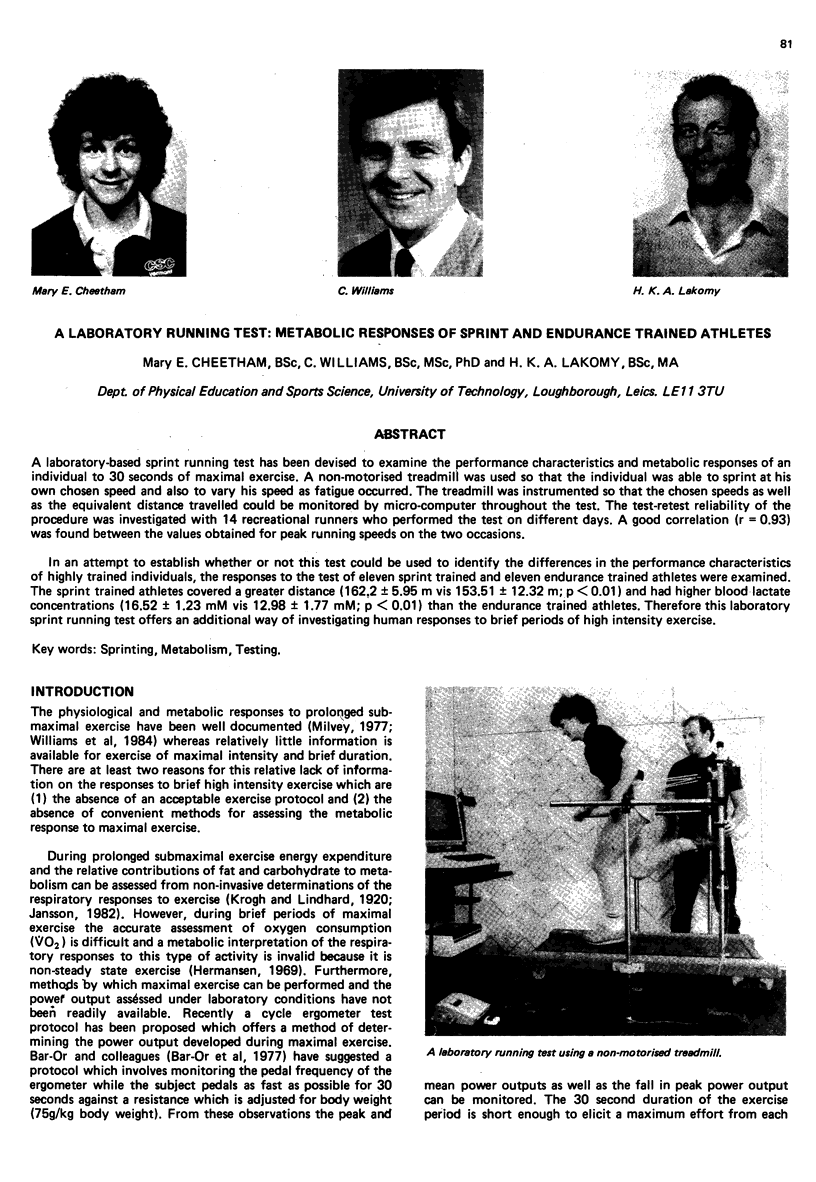
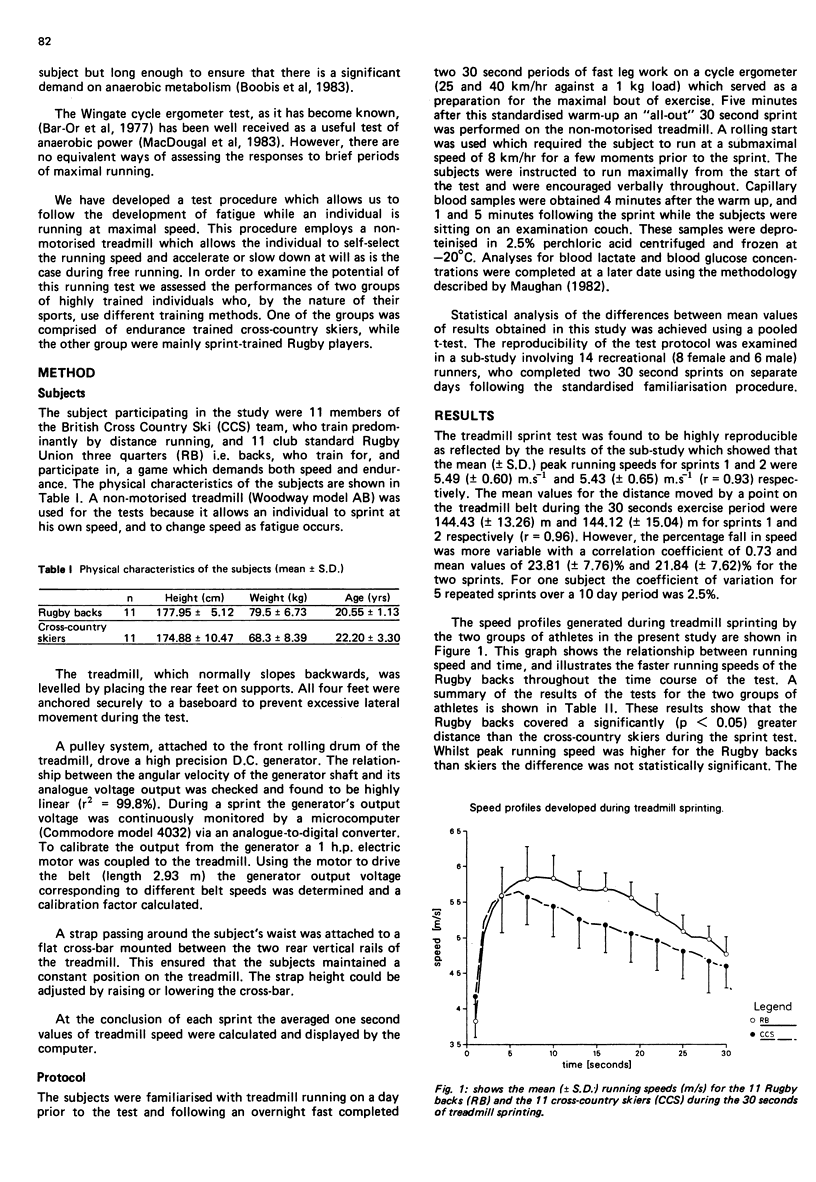
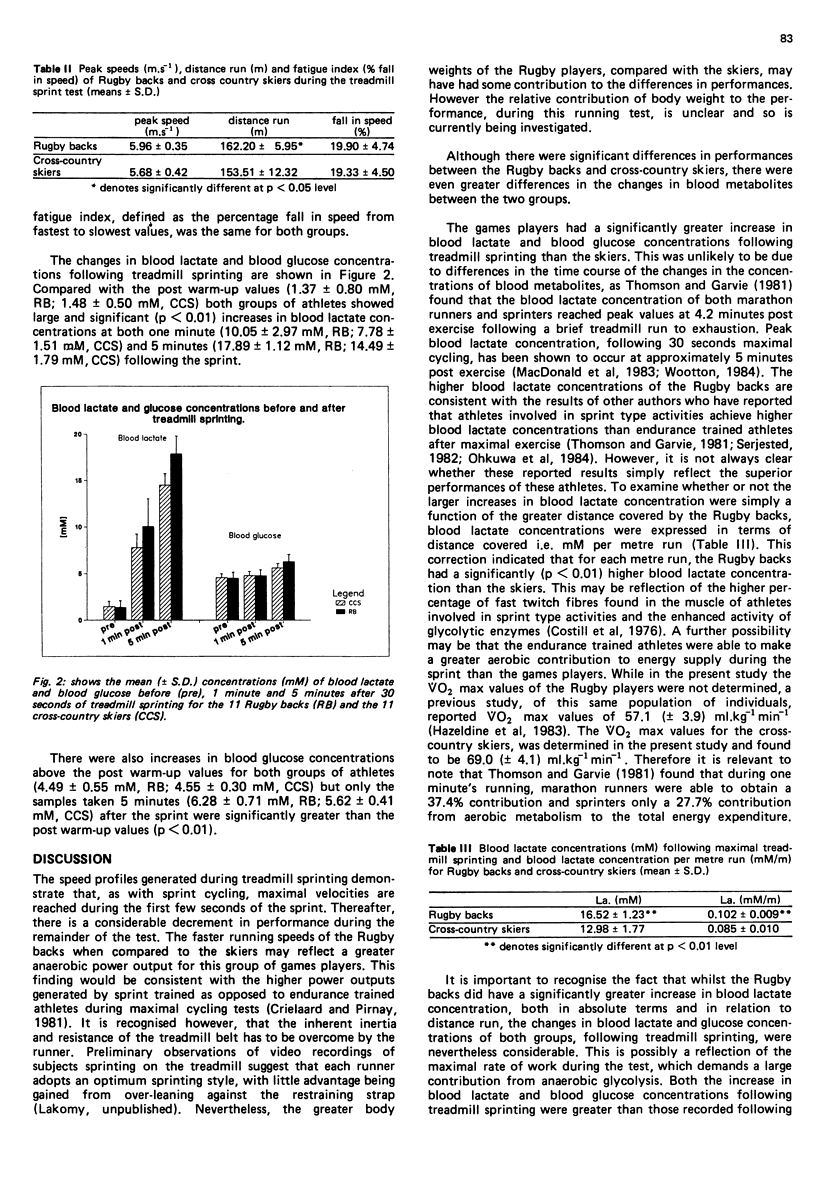
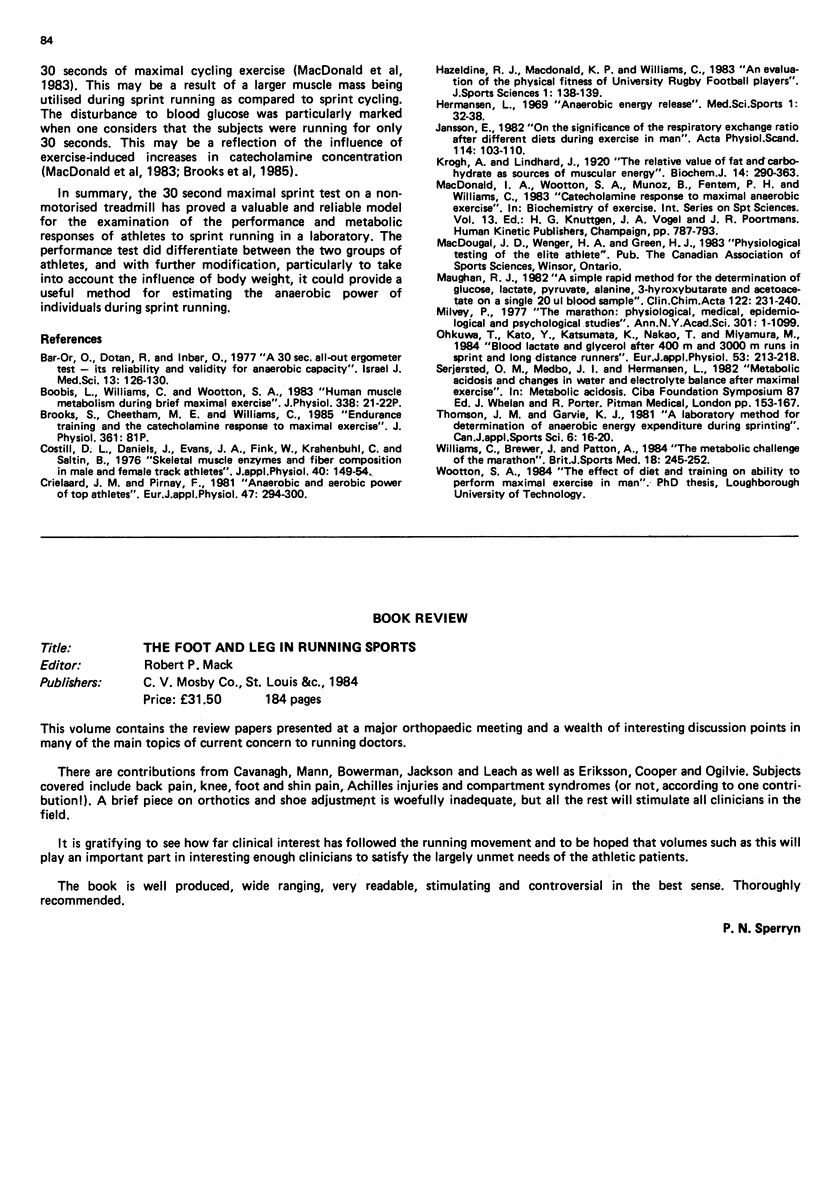
Images in this article
Selected References
These references are in PubMed. This may not be the complete list of references from this article.
- Costill D. L., Daniels J., Evans W., Fink W., Krahenbuhl G., Saltin B. Skeletal muscle enzymes and fiber composition in male and female track athletes. J Appl Physiol. 1976 Feb;40(2):149–154. doi: 10.1152/jappl.1976.40.2.149. [DOI] [PubMed] [Google Scholar]
- Crielaard J. M., Pirnay F. Anaerobic and aerobic power of top athletes. Eur J Appl Physiol Occup Physiol. 1981;47(3):295–300. doi: 10.1007/BF00422475. [DOI] [PubMed] [Google Scholar]
- Jansson E. On the significance of the respiratory exchange ratio after different diets during exercise in man. Acta Physiol Scand. 1982 Jan;114(1):103–110. doi: 10.1111/j.1748-1716.1982.tb06958.x. [DOI] [PubMed] [Google Scholar]
- Krogh A., Lindhard J. The Relative Value of Fat and Carbohydrate as Sources of Muscular Energy: With Appendices on the Correlation between Standard Metabolism and the Respiratory Quotient during Rest and Work. Biochem J. 1920 Jul;14(3-4):290–363. doi: 10.1042/bj0140290. [DOI] [PMC free article] [PubMed] [Google Scholar]
- Maughan R. J. A simple, rapid method for the determination of glucose, lactate, pyruvate, alanine, 3-hydroxybutyrate and acetoacetate on a single 20-mul blood sample. Clin Chim Acta. 1982 Jul 1;122(2):231–240. doi: 10.1016/0009-8981(82)90282-0. [DOI] [PubMed] [Google Scholar]
- Ohkuwa T., Kato Y., Katsumata K., Nakao T., Miyamura M. Blood lactate and glycerol after 400-m and 3,000-m runs in sprint and long distance runners. Eur J Appl Physiol Occup Physiol. 1984;53(3):213–218. doi: 10.1007/BF00776592. [DOI] [PubMed] [Google Scholar]
- Sejersted O. M., Medbø J. I., Hermansen L. Metabolic acidosis and changes in water and electrolyte balance after maximal exercise. Ciba Found Symp. 1982;87:153–167. doi: 10.1002/9780470720691.ch9. [DOI] [PubMed] [Google Scholar]
- Williams C., Brewer J., Patton A. The metabolic challenge of the marathon. Br J Sports Med. 1984 Dec;18(4):244–252. doi: 10.1136/bjsm.18.4.244. [DOI] [PMC free article] [PubMed] [Google Scholar]




